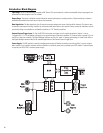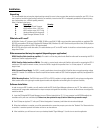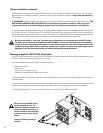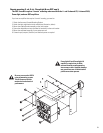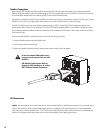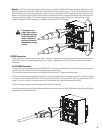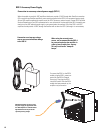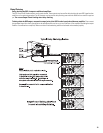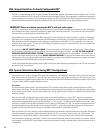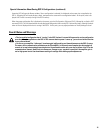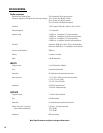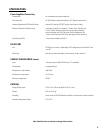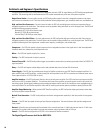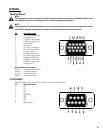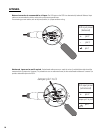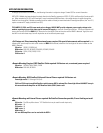
14
USE- General Guidelines for Freely Configurable DSP
The DSP-4 is configured (programmed) by using the included Signal Manager software. The software must be installed on your PC and the
PC must be connected to the DSP-4 using a 9-pin serial cable and an available COM port. Once programmed, the module can operate with-
out any connection to the computer. Any time changes are needed to the DSP’s configuration, the RS-232 connection must be active (cable
connected). Software operating instructions are provided in the form of an in-depth Help file in the Signal Manager software.
MPORTANT! Please read before operating the DSP-4 with your audio system.
The DSP-4 is a professional level DSP product that allows the user to produce virtually unlimited signal processor variations and configura-
tions. Because of the infinite configuration possibilities of digital signal processing and the DSP-4, it is possible to create configurations
that may result in unwanted signals or uncontrollable output.
Signal Manager has no way of knowing if the DSP configuration you have designed will produce the results you intend. You can create
signal loops in your configuration that may oscillate and could damage your sound system if you apply such configurations to the DSP-4.
When applying an untested configuration or when designing or experimenting with the DSP-4, it is a very good idea to turn down the
amplifier’s physical gain controls. That way, you won’t damage your speakers or create very loud sounds if you apply a configuration that
doesn’t do what you thought it would.
As a general rule, DO NOT CREATE SIGNAL LOOPS! Do not mix the output of a DSP object back into its own input! There is nothing
useful to achieve by doing that, you will only create an oscillator that could damage you speakers. Also, USE THE SINE AND NOISE
GENERATOR OBJECTS WITH GREAT CAUTION! These objects produce signals that can harm your speakers. Turn down the gain. If
you don’t hear a signal when you think you should, DO NOT INCREASE THE GAIN!!! If the signal isn’t audible at lower levels, there is
something else wrong. Turning up the gain to full exposes you and your system to the possibility that some loose connection somewhere
will suddenly send a full-amplitude signal through your sound system.
Like all freely configurable signal processing tools, the DSP-4 will do what the configuration you design tells it to do. This may not be what
you expect it to do, so use caution.
USE- Special Information About Saving DSP-4 Configurations
The computer which is used to create the DSP-4 signal flow configurations, and subsequently save them to disk, should be the same com-
puter used to modify and adjust the DSP-4 settings in the future. Naturally, this might not always be the case. At the least, a copy of the
DSP-4 configuration(s) should be saved to floppy disk, so the configuration files can be transferred to whatever computer(s) might be used
to adjust or modify the DSP-4 module settings in the future.
The reason:
The Signal Manager software works in conjunction with the DSP-4 module to create specific signal processing algorithms for filters,
delays, limiters, and the like. The algorithms are displayed on the computer screen as ”configuration files”, with graphical representations
of each function and parameters. The user creates a signal chain, “wiring” together blocks of functions as needed for each particular audio
channel or channels.
When you build a DSP-4 configuration from scratch (or load one from disk) and perform an “Apply to DSP” operation, the information
downloaded into the DSP-4 module is NOT the graphical representation of what is displayed on the screen. The downloaded information
consists of the compiled algorithm coefficients of the functions, i.e. “just the math”. If building a new configuration from scratch, when
you apply it to the DSP-4 you will also be prompted to save it to disk as a Configuration file (*.cfg). The path for this Configuration file is
then associated with the compiled information that is applied to the DSP-4. A previously saved (to disk) configuration file may also be
applied to the DSP-4, and that particular file path is associated with the algorithms now loaded in the DSP-4.
When you connect a DSP-4 to a computer, the Signal Manager software first attempts to locate and display the configuration file that has
been associated with the algorithm coefficients currently running in the DSP-4, to correlate “what you hear” with “what you see”. This
would allow you to further adjust a delay or a filter parameter, for instance. If the correct file is located, based on the associated path
name, the graphical configuration is displayed. If the file is not found (the file has been renamed, moved, deleted, or you are not using the
same computer on which the DSP-4 was originally configured) the computer will display a message asking if you would like to browse for
a configuration.



